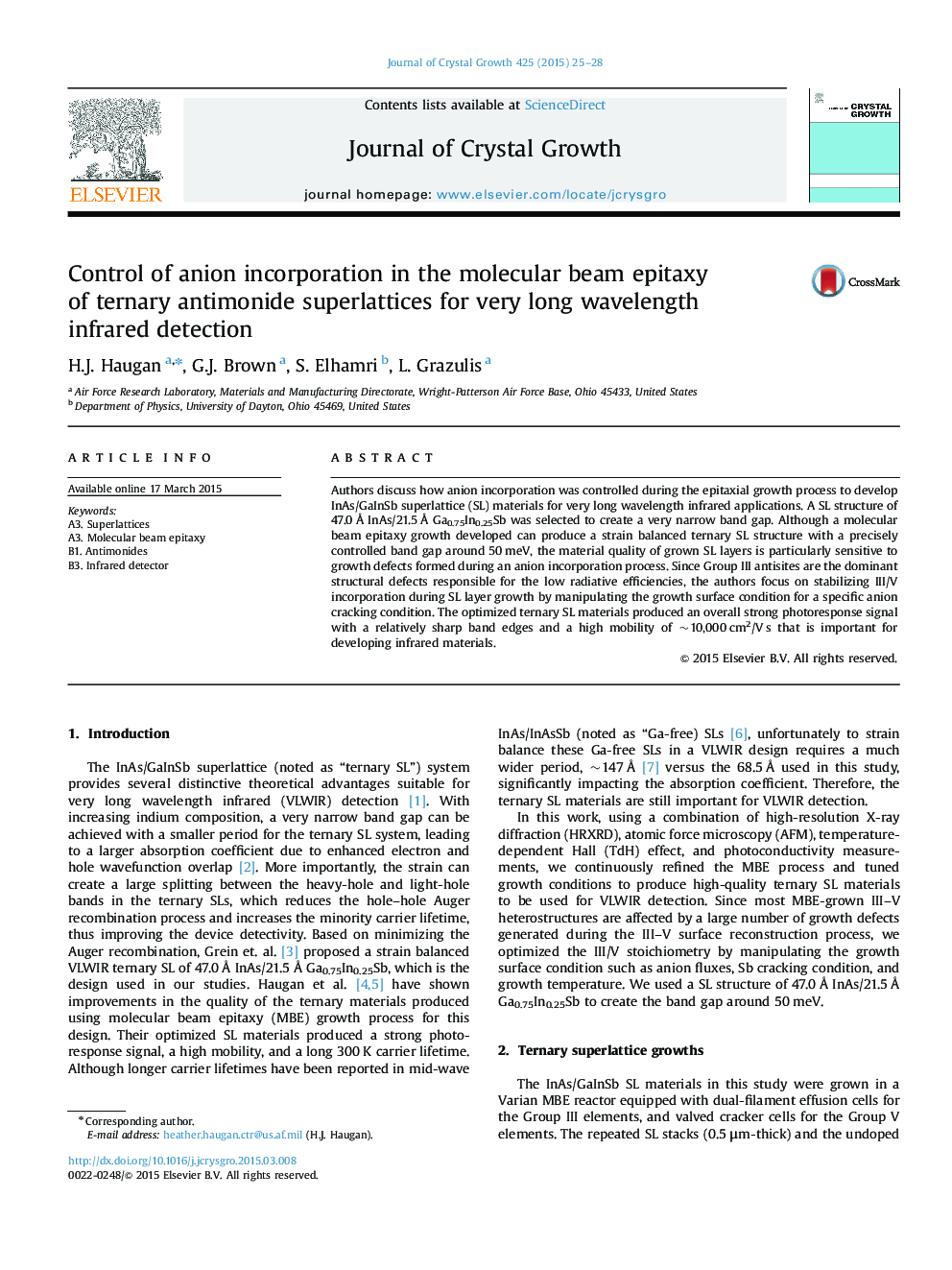| Article ID | Journal | Published Year | Pages | File Type |
|---|---|---|---|---|
| 8149609 | Journal of Crystal Growth | 2015 | 4 Pages |
Abstract
Authors discuss how anion incorporation was controlled during the epitaxial growth process to develop InAs/GaInSb superlattice (SL) materials for very long wavelength infrared applications. A SL structure of 47.0Â Ã
InAs/21.5Â Ã
Ga0.75In0.25Sb was selected to create a very narrow band gap. Although a molecular beam epitaxy growth developed can produce a strain balanced ternary SL structure with a precisely controlled band gap around 50Â meV, the material quality of grown SL layers is particularly sensitive to growth defects formed during an anion incorporation process. Since Group III antisites are the dominant structural defects responsible for the low radiative efficiencies, the authors focus on stabilizing III/V incorporation during SL layer growth by manipulating the growth surface condition for a specific anion cracking condition. The optimized ternary SL materials produced an overall strong photoresponse signal with a relatively sharp band edges and a high mobility of ~10,000Â cm2/VÂ s that is important for developing infrared materials.
Related Topics
Physical Sciences and Engineering
Physics and Astronomy
Condensed Matter Physics
Authors
H.J. Haugan, G.J. Brown, S. Elhamri, L. Grazulis,
